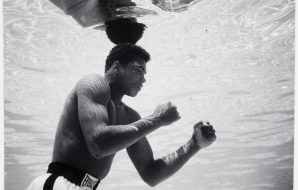A Beginner’s Guide to Boxing: Getting Started in the Sport
Introduction:
Boxing is a sport that offers not only an incredible physical workout but also mental discipline, self-confidence, and an outlet for stress relief. Whether you’re drawn to the idea of stepping into the ring or simply want to improve your fitness level, boxing has something to offer for everyone. However, starting can be intimidating if you’re unsure where to begin. Fear not! In this beginner’s guide, we’ll walk you through the basics of boxing, from finding the right gym to mastering essential techniques.
Finding the Right Gym:
The first step on your boxing journey is finding a reputable gym with knowledgeable trainers who can guide you through the fundamentals. Look for a gym that offers beginner-friendly classes or one-on-one sessions tailored to newcomers. Don’t be afraid to visit multiple gyms, ask questions, and observe a class before making a decision. The right atmosphere and supportive community can make all the difference in your boxing experience.
Understanding Basic Techniques:
Boxing may seem daunting at first, but mastering the basics is key to building a strong foundation. Start by familiarizing yourself with fundamental techniques such as stance, footwork, and punches:
- Stance: Stand with your feet shoulder-width apart, one foot slightly ahead of the other (for orthodox stance, left foot forward; for southpaw stance, right foot forward). Keep your knees slightly bent, hands up to protect your face, and chin tucked.
- Footwork: Practice moving around the ring using small, controlled steps. Focus on maintaining balance and staying light on your feet. Mastering footwork will help you evade punches and set up your own attacks.
- Punches: There are four basic punches in boxing:
- Jab: A quick, straight punch thrown with your lead hand.
- Cross: A powerful punch thrown with your rear hand, rotating your hips and shoulders for maximum force.
- Hook: A curved punch aimed at your opponent’s head or body, generated from the side with a bent arm.
- Uppercut: A punch thrown upward toward your opponent’s chin, using your legs and torso for power.
Training and Conditioning:
Boxing requires not only technical skill but also physical conditioning. Incorporate a variety of workouts into your training routine to improve strength, speed, endurance, and flexibility. This might include cardio exercises like running or jump rope, strength training with weights or bodyweight exercises, and agility drills to enhance your reflexes and coordination.
Safety First:
While boxing offers numerous benefits, it’s essential to prioritize safety at all times. Always warm up properly before training sessions, wear appropriate protective gear (such as hand wraps and gloves), and listen to your body to prevent injuries. Additionally, make sure to spar and engage in contact drills only under the supervision of a qualified coach.
Setting Goals and Tracking Progress:
As you progress in your boxing journey, set realistic goals to keep yourself motivated and focused. Whether it’s mastering a specific technique, increasing your stamina, or competing in your first amateur bout, having clear objectives will help you stay on track and measure your progress along the way. Keep a training journal to record your workouts, track improvements, and celebrate your achievements.
Conclusion:
Embarking on your boxing journey as a beginner can be both exhilarating and challenging, but with dedication, perseverance, and the right guidance, you’ll discover a rewarding and empowering pursuit that will enrich your life in countless ways. Remember to stay patient, stay humble, and above all, enjoy the journey as you learn and grow as a boxer. Welcome to the world of boxing—let the adventure begin!









